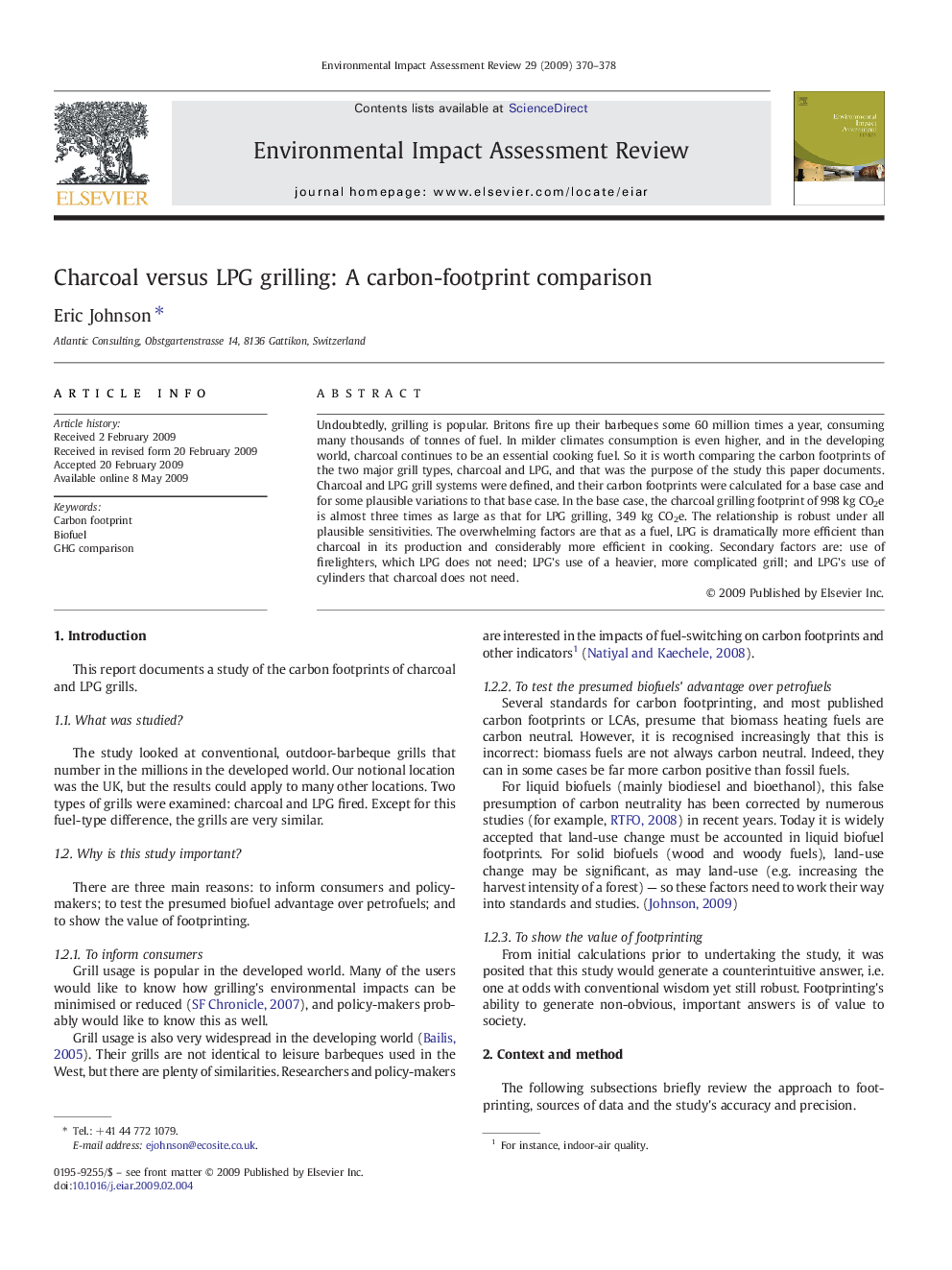| کد مقاله | کد نشریه | سال انتشار | مقاله انگلیسی | نسخه تمام متن |
|---|---|---|---|---|
| 1053202 | 946533 | 2009 | 9 صفحه PDF | دانلود رایگان |

Undoubtedly, grilling is popular. Britons fire up their barbeques some 60 million times a year, consuming many thousands of tonnes of fuel. In milder climates consumption is even higher, and in the developing world, charcoal continues to be an essential cooking fuel. So it is worth comparing the carbon footprints of the two major grill types, charcoal and LPG, and that was the purpose of the study this paper documents. Charcoal and LPG grill systems were defined, and their carbon footprints were calculated for a base case and for some plausible variations to that base case. In the base case, the charcoal grilling footprint of 998 kg CO2e is almost three times as large as that for LPG grilling, 349 kg CO2e. The relationship is robust under all plausible sensitivities. The overwhelming factors are that as a fuel, LPG is dramatically more efficient than charcoal in its production and considerably more efficient in cooking. Secondary factors are: use of firelighters, which LPG does not need; LPG's use of a heavier, more complicated grill; and LPG's use of cylinders that charcoal does not need.
Journal: Environmental Impact Assessment Review - Volume 29, Issue 6, November 2009, Pages 370–378